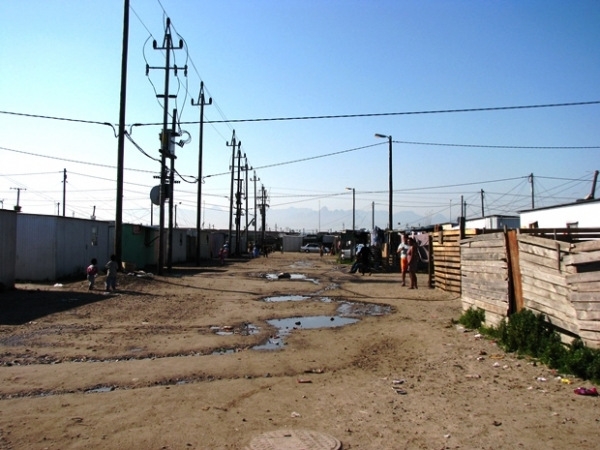Blikkiesdorp: what’s the plan?

Evictions are a daily part of living on the margins in South Africa. This week, residents were evicted from a block of flats in Berea, Johannesburg. Authorities descended early on Wednesday morning on the flats where hundreds are people are living. Their personal belongings – including fridges, clothes and computers – were left outside in the street. Where do such people go? In Cape Town, they have been sent to a place called Blikkiesdorp.
The residents of Blikkiesdorp are made up of a variety of groups moved due to ‘emergency situations’, including victims of xenophobic attacks, former occupants of an unsafe building that collapsed in Salt River, evicted people for which the City has been named respondent, people living on the streets, in backyard housing, in road reserves, in pipes, on pavements or those living in condemned buildings.
The Symphony Way Pavement Dwellers were famously relocated here, as were the refugees from Blue Waters who had been subject to violence.
These communities were moved into Blikkiesdorp on the basis that their stay would be temporary. They have now been in a “temporary relocation area” or TRA for seven years with no plans available for moving them.
The Open Democracy Advice Centre (ODAC) has worked, with Right2Know and others to identify a group which is representative of the community, helped them develop an extensive list of policy documents that will dictate their further actions, got those documents, analysed them, given the documents and analysis to the communities, made formal submissions on their behalf and attended meetings alongside them, including meetings with the City of Cape Town.
This Joint Committee is hard at work to try and plot the future course of the TRA. The City has come clean and said that there is a plan, but it won’t be implemented for up to seven years into the future.
The problem with the plan is that it essentially breaks up the community again. People will be rehoused in the new development if they qualify for a housing subsidy, but if they don’t, then they will be given ‘alternative accommodation.’ Some people can’t ever qualify as they are foreign nationals. Some people were evicted from houses as their rates soared.
We have no idea what ‘alternative accommodation’ means, and the City hasn’t said.
New areas for people who are evicted are very far from the City.
The judgment Residents of Joe Slovo Community Western Cape v Thubelisha Homes and Others provides that “the respondents [the City] are directed to engage meaningfully with the applicants [Residents of Joe Slovo Community] prior to each relocation to ascertain the names, details and circumstances of those affected by the relocation; the time and manner in which the relocation will take place; the precise units to which each relocated household is to be moved, the need for transport for the people and possessions to be moved; the provision of transport from the temporary accommodation to schools, clinics and place of work; and the allocation of permanent housing in due course.”
To our knowledge, this has not been done. It may be that the relocation is so far off that the City really can’t be bothered yet. If that is the case, then the residents deserve to know that.
In the meantime, the Airports Company South Africa is planning a runway upgrade and a new runway, in a process which has excluded the residents of Blikkies, on the basis that they are essentially not there.
The assumption that these communities will be relocated is built into the Environmental Impact Assessment studies. But environmental authorities must apply their minds to all socio-economic considerations. One cannot decide whether or not an activity is going to be “sustainable” without reference to all relevant information.
The failure to take into account the fact that these communities would need to be evicted in order to proceed with the airport development is a fatal flaw in this EIA. Nevertheless, the community are using the process to raise their concerns.
There are many issues at play here, and we must support the call by Blikkiesdorp residents not to be moved from blik to blik.
Tilley is is Head of Advocacy at the Open Democracy Advice Centre. The opinions expressed in this article are solely those of the author. No inference should be made on whether these reflect the editorial position of GroundUp.
Support independent journalism
Donate using Payfast

Don't miss out on the latest news
We respect your privacy, and promise we won't spam you.
Next: City cannot continue to ignore the crisis at Wolwerivier
Previous: Deaf man’s long wait for RDP house

This article is licensed under a Creative Commons Attribution-NoDerivatives 4.0 International License.
